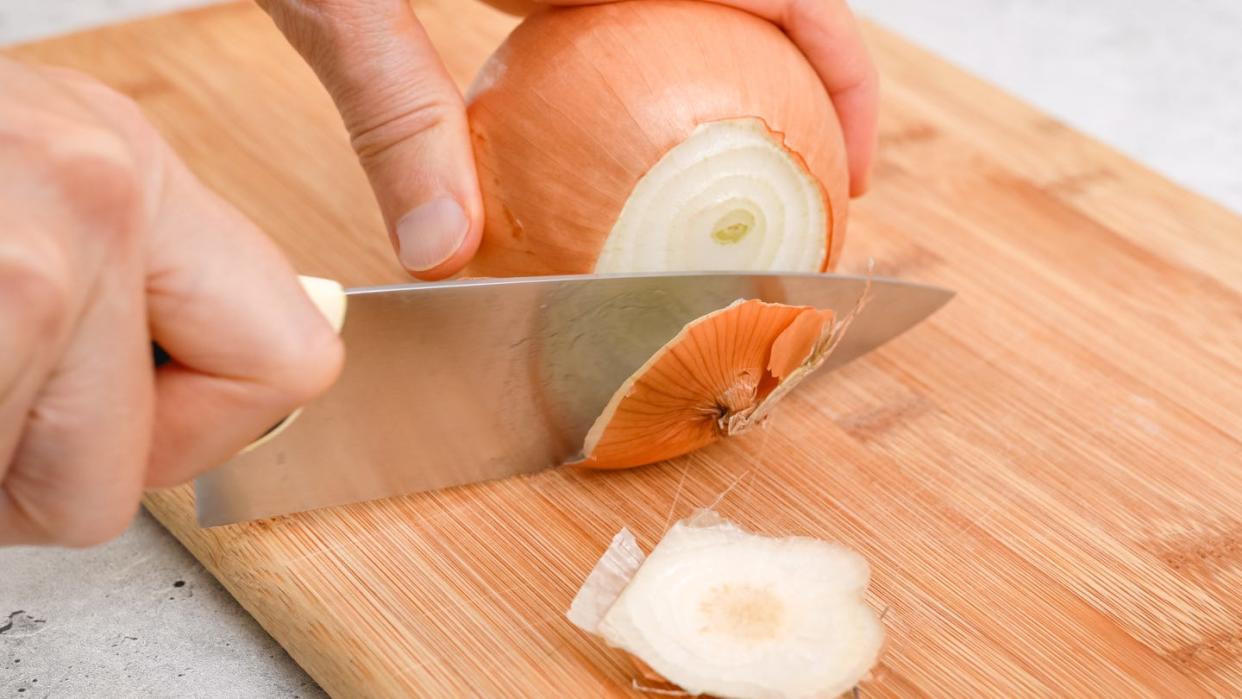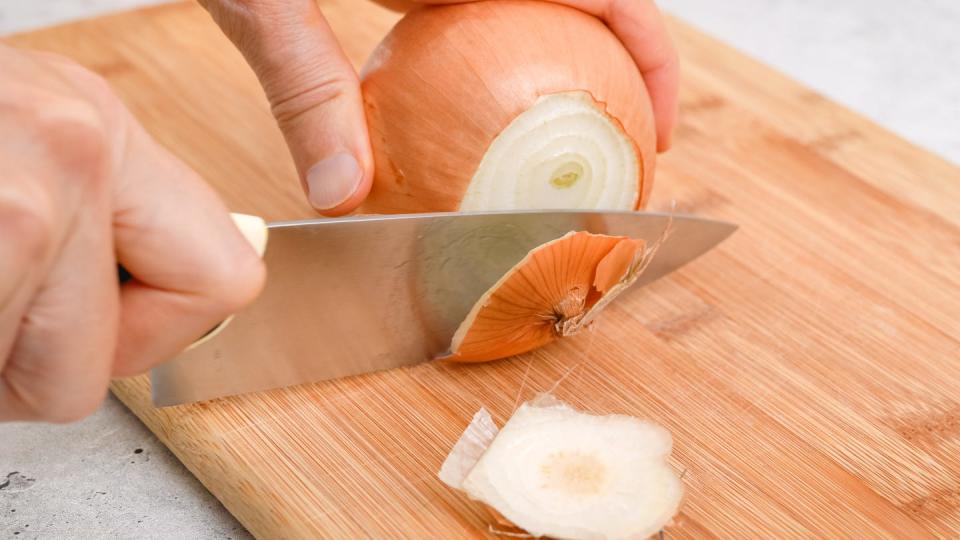Don't Throw Away Your Onion & Garlic Peels

You might already be hoarding sweet potato peels to turn into crispy veggie chips, but did you know you should also be saving onion and garlic peels? That’s right, these papery scraps that usually end up in the trash are actually packed with nutrition and culinary potential.
Onion skins contain large amounts of quercetin, a plant pigment that’s rich in antioxidants and other nutrients that have anti-inflammatory and anti-cancer properties. Garlic peels are also rich in antioxidants. Just as importantly, both are loaded with valuable flavor that can be used in multiple ways to take your recipes to new heights.
Here are five ways to use onion and garlic peels—because all that flavor just shouldn’t go to waste.
DIY Onion and Garlic Powders
Ditch jarred onion and garlic powders and make your own. Simply wash the peels, spread them out on a metal baking sheet, and bake at 250 degrees until dried and crisp to the touch. (If you want two distinctly different powders, make sure you keep the peels separate on the baking sheet!) Blitz the dried peels in the blender until they become a fine powder. Or, alternatively, just store the crisps as they are and use them as salad toppings.

Season Pasta or Rice While It Cooks
Give your pasta or rice an upgrade by steeping the peels in their cooking liquid. Assistant food editor and pasta expert Francesca Zani adds the onion and garlic to her pasta water for a little extra je ne sais quois. Just make sure to pick out the peels after you’re done cooking; no one wants a soggy onion skin in their carbonara.
Make Stock
Save time and get more flavor by leaving the peels on the onions and the garlic the next time you make stock. (If you have peels saved from another cooking project, feel free to add them in too.) In addition to giving the stock a more concentrated flavor, senior food director Rob Seixas shares that specifically yellow onion peels can bring a “nice amber color,” adding to the visual appeal. Avoid red onions peels here, though, unless you want magenta stock.
Roast with Peels On for Better Flavor and Texture
Roasting a bunch of garlic to make roasted garlic butter? Leave those peels on. According to Seixas, the peels protect the garlic from becoming dried out and overly charred on the outside while they roast so they retain their moisture and “you just get the sweet (flavor)” without any of the bitter flavor notes. “Also it’s just easier,” he points out. You don't need to tell me twice.
Make Immune-Boosting Tea
No antioxidants left behind! Steep onion peels in hot water for 15-30 minutes (depending on how strong you like it), then strain the peels out and add a little honey to make a savory-sweet tea that will boost your immune system and warm you from head to toe. Most of us can always use a little nutrient boost, especially in the fall or winter. Don’t let those valuable nutrients go into the trash.
Have another way you like to repurpose onion or garlic peels? Let us know in the comments below.
You Might Also Like

